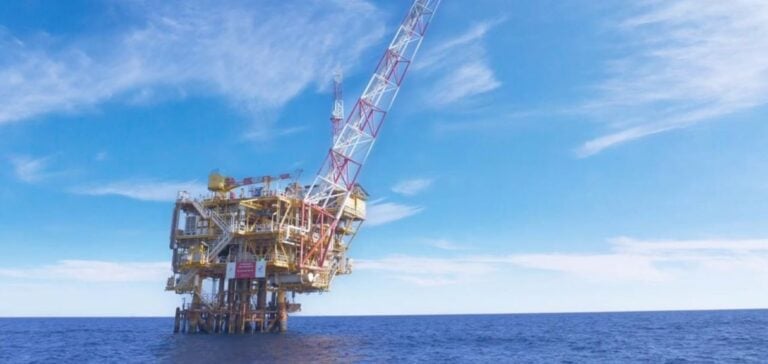The Indonesian government has announced the opening of its second oil and gas bidding round for 2024, offering six onshore and offshore blocks. These blocks represent an estimated potential of 48 billion barrels of oil equivalent (boe). This initiative aligns with the country’s energy strategy to attract more investments in the hydrocarbons sector.
Among the six blocks up for auction, the Air Komering Block, located in South Sumatra, is available via a regular auction. This block holds potential reserves of 307 million boe in oil and gas. Investors can choose between two contractual mechanisms: a cost-recovery model with a profit split of 60:40 for oil and 55:45 for gas, or a gross-split model with ratios of 53:47 for oil and 51:49 for gas.
Strategic Blocks for Committed Players
The five other blocks, offered through direct bidding, have already undergone preliminary studies conducted by specialized companies. This approach gives preference to bidders who participated in these studies. These blocks include:
– Binaiya (Maluku): Potential reserves of 6.7 billion barrels of oil and 15 Tcf (trillion cubic feet) of gas.
– Serpang (East Java): Estimated reserves of 1.2 billion barrels of oil and 6.3 Tcf of gas.
– Kojo (Makassar Strait): 90.2 million barrels of oil and 2.1 Tcf of gas.
Two additional blocks in West Papua, Gaea I and Gaea II, present the largest prospects, with combined reserves of approximately 30 billion boe. According to Dadan Kusdiana, Acting Director General of the Ministry of Energy and Mineral Resources, these blocks offer exceptional potential to meet growing energy demands.
Major Discovery in Western Indonesia
Meanwhile, the ministry has announced significant new discoveries in the IBB 2 (Western Indonesia Phase 2) region, covering four major basins: East Natuna, Makassar Strait, Southeast Java, and Barito. These areas are estimated to contain more than 4.3 billion boe, including 2.8 billion from the East Natuna Basin and 1.5 billion from the Southeast Java Basin.
Nanang Abdul Manaf, an exploration expert from the ministry, indicated that detailed studies on these two regions could reveal additional potential of up to 17 billion boe.
An Ambitious Yet Challenging Goal
While Indonesia aims for a national production target of 1 million barrels per day (b/d) of oil and 12 billion cubic feet per day (Bcf/d) of gas by 2030, the 2024 projections remain below expectations. The ministry forecasts combined production of 592,100 b/d for oil and 990,000 boe/d for gas, well short of the annual target of 1.668 million boe/d.
Despite this shortfall, these new auctions may attract key investments, strengthening Indonesia’s position in the global energy market.






















